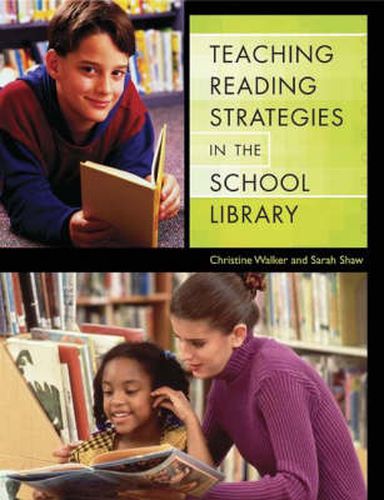Readings Newsletter
Become a Readings Member to make your shopping experience even easier.
Sign in or sign up for free!
You’re not far away from qualifying for FREE standard shipping within Australia
You’ve qualified for FREE standard shipping within Australia
The cart is loading…






Walker and Shaw link the teaching of ten commonly taught reading strategies such as sequencing, compare and contrast, and prediction to newly published picture books. Each chapter of the book explains a strategy, furnishes a graphic organizer with which to teach it, and an in-depth modelled discussion of how to use the strategy with two or three books. Additionally, each chapter furnishes an annotated bibliography of other books that would lend themselves easily to the teaching of this strategy. The book is written particularly for the use of teacher librarians who are being asked to support reading instruction as part of the instructional programme in their library (as opposed to the usual programme of literary appreciation, reading motivation etc), but are not given long periods of time to work with students. These lessons are quick and self-contained. Each lesson comes with reproducible templates to make laminated graphic organizers that can be used again and again with various books to teach each of the ten strategies. Primary school teachers would also find this book useful. Links commonly-taught reading strategies to books Contains clip-art and other reproducible resources
$9.00 standard shipping within Australia
FREE standard shipping within Australia for orders over $100.00
Express & International shipping calculated at checkout
Walker and Shaw link the teaching of ten commonly taught reading strategies such as sequencing, compare and contrast, and prediction to newly published picture books. Each chapter of the book explains a strategy, furnishes a graphic organizer with which to teach it, and an in-depth modelled discussion of how to use the strategy with two or three books. Additionally, each chapter furnishes an annotated bibliography of other books that would lend themselves easily to the teaching of this strategy. The book is written particularly for the use of teacher librarians who are being asked to support reading instruction as part of the instructional programme in their library (as opposed to the usual programme of literary appreciation, reading motivation etc), but are not given long periods of time to work with students. These lessons are quick and self-contained. Each lesson comes with reproducible templates to make laminated graphic organizers that can be used again and again with various books to teach each of the ten strategies. Primary school teachers would also find this book useful. Links commonly-taught reading strategies to books Contains clip-art and other reproducible resources